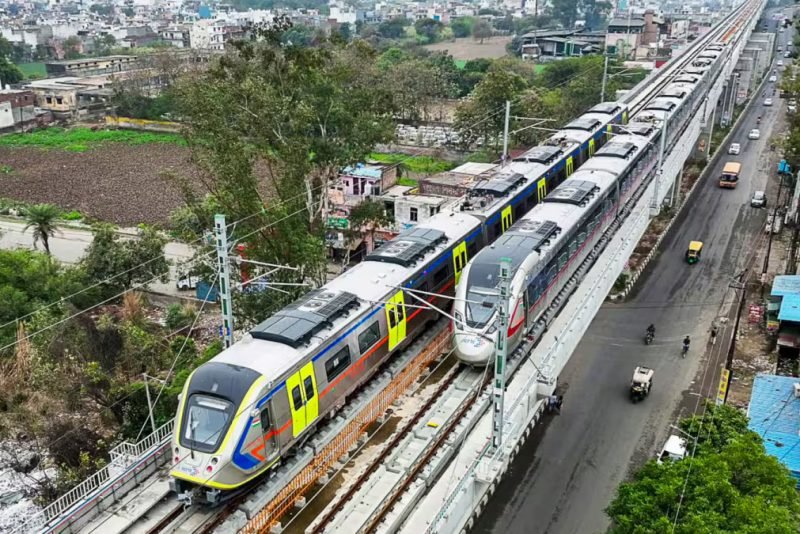The confluence of unchanged repo rates, buoyant demand in luxury real estate, and increased project launches collectively signifies a promising phase for the industry, fostering growth and resilience.
Property developers welcomed the Reserve Bank of India’s decision to keep the repo rate unchanged on Thusday (February 8), a move that is likely to resonate positively within the real estate sector. This decision creates a conducive environment for both individuals and businesses, and will stimulate demand momentum.
The unaltered repo rate, coupled with a bullish domestic economic sentiment, is poised to elevate investors’ confidence in the real estate market.
“This move also augurs well for the luxury real estate segment, where demand remains robust and is likely to continue its upward trajectory. In tandem with this, we are witnessing a notable uptick in new project launches, further underscoring the positive outlook for the real estate sector. The confluence of unchanged repo rates, buoyant demand in luxury real estate, and increased project launches collectively signifies a promising phase for the industry, fostering growth and resilience,” said Aditya Kushwaha, CEO and Director, Axis Ecorp.
Here’s we take a look at some of the views of India’s top developers on the MPC decision:
Aman Sharma, Founder & Managing Director, Aarize: “The RBI decision to maintain the status quo on repo rates underscores a strategic approach toward nurturing economic recovery. By abstaining from rate adjustments, the central bank aims to provide stability while encouraging banks to offer enticing home loan packages, thus invigorating the housing market. This calculated move is poised to inject optimism into the real estate landscape, fostering a conducive environment for developers and aspiring homeowners alike. While the decision aligns with the goal of stimulating housing demand, it also acknowledges the need to tread cautiously amidst inflationary pressures. The deliberate stance on borrowing rates is poised to benefit potential homebuyers, as it ensures affordability and sustains momentum in the real estate sector.”
Santosh Agarwal, Executive Director and CFO, Alphacorp: “The RBI has opted to keep repo rates unchanged, a move aimed at bolstering economic recuperation and potentially spurring banks to extend favorable home loan terms to stimulate housing demand. This choice is anticipated to instill confidence in both developers and homebuyers, enabling banks to provide more attractive rates to stimulate housing demand. Nevertheless, in light of inflationary pressures, banks may exercise prudence in moderating rate cuts excessively. The steadfastness in borrowing rates will prove advantageous for prospective homebuyers, thereby fostering heightened demand within the real estate sector.”
Pankaj Pal, Managing Director, Whiteland Corporation:“The RBI decision to maintain the repo rate steady for the sixth consecutive time is a welcome move as it has brought relief for home loan borrowers, offering stability and confidence. This continuity in interest rates offers reassurance to both existing homeowners and potential buyers, encouraging them to make informed decisions. Moreover, developers can now embark on new projects with renewed confidence, knowing that the interest rate environment remains favorable. As the central bank maintains its focus on gradually withdrawing accommodative policies, it signals a balanced approach towards curbing inflation while supporting economic growth in the long term.”
LC Mittal, Director, Motia Group: “For India’s real estate sector, this status quo comes as a relief, even if temporary, after facing headwinds from rising home loan costs through 2022. Developers will also welcome the breather after material and financing costs escalated equipment and project costs. The outlook seems encouraging for broader economy, with inflation set to cool off further, a growth-focused Union Budget 2023, and resilience across macroeconomic parameters. While risks remain from global factors, the RBI’s accommodative stance exemplifies the structural strengths and unique dynamics powering India’s ascendancy amongst the world’s fastest growing major economies. As long as economic fundamentals hold up, demand drivers for housing like urbanization, rising incomes and nuclearization should continue fuelling market growth.”
Gurmit Singh Arora, National President, Indian Plumbing Association: “The breather allows participants across real estate, infrastructure and allied ecosystems to assess the lag effect of past tightening measures before next steps. For plumbing and sanitary ware, volatile material costs from global supply chain disruptions had already squeezed margins. As borrowing rates ease a bit, players can focus more on streamlining operations and driving efficiency instead of price escalations alone. Dewatering, pipe producers and pump manufacturers also get fiscal latitude to stabilize inventory cycles. However, we must also optimize costs, enhance production technologies and improve channel synergies for greater value delivery to stay resilient. Because over the medium term, auxiliary interest rates in the broader economy will rise further to contain inflation. So rather than temporary troughs, the sector must use the next few quarters to bolster capabilities and competitive strengths.”
Anurag Goel, Director, Goel Ganga Developments: “An unchanged repo rate is a delight for buyers since it gives them another chance to buy real estate at the greatest pricing. In February 2023, the MPC last increased this rate by 25 basis points, to 6.50%. According to recent data, consumers are doing reasonably well in the housing market, which is consistent with the strong status of the economy. As we approach the new quarter of the season, home sales are trending strongly; the RBI’s decision to maintain current interest rates will be critical in propelling the growth of the residential sector.”
Aman Gupta, Director, RPS Group: “For real estate, the breather from further rate hikes provides temporary respite as home loan rates remain elevated post the cumulative 250 basis points rise last year. As we progress through 2023, the transmission of these cumulative hikes to bank lending rates will accrue more meaningfully, thereby impacting mortgage serviceability and affordability. However, India’s broader growth outlook seems optimistic backed by solid domestic demand drivers. Our favorable demographics, rapid urbanization and rising household incomes continue catalyzing structural housing demand, beyond transient property cycles. So while property enquiries may witness some moderation due to higher borrowing costs, volume declines seem unlikely.”
Ravi Singhal, CEO, GCL Broking:“Priced in rates are constant. The GDP growth prediction climbed from 7 to 7.2, but the inflation outlook decreased from 5.3 to 5%. In FY 24, this will support the market’s increasing trend in subsequent quarters. Additionally, the GDP growth rate is expected to reach 7.5% in FY 25. While inflation is down to 4.5%. Not a rise in liquidity. The process charges statement for Bank Nifty is negative.”
Saransh Trehan, Managing Director, Trehan Group: “With a fabulous consumer demand overruning the real estate sector, especially luxury housing, the decision to maintain the repo rate status quo seems plausible and supports feasible macroeconomic indicators. The decision will embolden new home buyers to throng to the property investment avenues and reap the advantage of low-home EMIs. The nosediving inflation and smooth GDP growth are binary factors that are supporting overall real estate demand. As India emerges as the world’s fifth-largest economy and gearing up to be the third-largest in the future, the real estate sector will be a great contributor to this phenomenon. Fuelling up positive demand is essential and, thus, the current repo rate policymaking remarkably does so.”
Mohit Jain, Managing Director, Krisumi Corporation: “By holding rates steady, the RBI prioritizes inflation control within its target range. While from the real estate sector perspective, a downward revision in rates would have been the best outcome, but the RBI’s decision to hold rates implies steady EMIs for borrowers. We expect continued momentum in sales across various property segments, including affordable, mid-range, and luxury housing throughout various regions for the foreseeable future. A downward revision, which is expected later this year, would further propel the sector.”
Prashant Rao, Managing Director, Poulomi Estates:“Against the backdrop of global uncertainties, the RBI decision to maintain policy rates at 6.5% came as no surprise. However, the governor highlighted that India’s potential growth is currently underpinned by structural drivers such as improved physical infrastructure, the development of world-class digital and payment technologies, ease of doing business, increased labor force participation, and better quality of fiscal spending. Consequently, the projected real GDP growth for the next financial year stands at 7%, with risks evenly balanced, and headline inflation has moderated to 5.5%. These developments bring positive news for both the Indian economy and the real estate sector. With this we anticipate a rate cut in the next MPC meeting, which will be advantageous for home buyers.”
Source : FE




